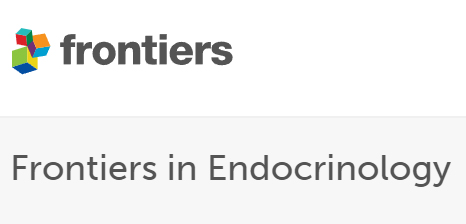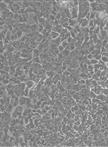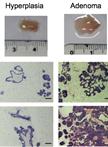- EN - English
- CN - 中文
Generation and Maintenance of Patient-Derived Endometrial Cancer Organoids
患者来源的子宫内膜癌类器官的构建与维持
(*contributed equally to this work) 发布: 2024年10月20日第14卷第20期 DOI: 10.21769/BioProtoc.5093 浏览次数: 1969
评审: Alessandro DidonnaRakesh Bam
Abstract
Endometrial cancer (EC) is the leading cause of gynecologic cancer morbidity and mortality in the U.S. Despite advancements in cancer research, EC death rates are increasing, particularly high-grade endometrial cancers. The development of three-dimensional (3D) patient-derived organoid (PDO) models for EC is crucial, as they provide a more accurate representation of the biological and genetic complexity of a patient’s tumor compared to traditional 2D cell lines. Here, we describe a protocol for cultivating PDO models from normal endometrium and EC across different EC subtypes. These EC PDO models can be expanded across multiple passages and facilitate the exploration of tumor behavior and drug responses, thereby advancing our understanding of the disease and potentially leading to more effective and individualized novel therapeutic strategies.
Key features
• Establishment of patient-derived EC and normal endometrium organoids.
• Accurate replication of the various histologic and molecular subtypes of EC within the organoids.
• Our approach provides a clinically relevant platform for studying EC development, metastasis, progression, and recurrence.
• It offers potential for developing targeted therapeutic interventions tailored to specific EC subtypes.
Keywords: Endometrial cancer (子宫内膜癌)Background
Endometrial cancer (EC) is the fourth most common cancer and the sixth leading cause of cancer mortality among women in the US. It is one of the few cancers experiencing a rapid rise in both incidence and mortality rates, and by 2040, it is projected to become the third most prevalent cancer and the fourth leading cause of cancer death, surpassing lung and colorectal cancers. Furthermore, EC presents a significant challenge due to its racial disparity, with the largest Black/White difference in 5-year relative survival among all cancers (63% vs. 84%) [1–4]. These concerning trends highlight the urgent need for research into the molecular and cellular basis of EC to advance our understanding and develop more effective therapeutic strategies.
Immortalized 2D cell lines and mouse models have been commonly used for EC research; however, they do not provide reliable models. 2D cell culture systems lack the critical 3D structure inherent in primary endometrial tissue, affecting glandular cell function influenced by their microenvironment and orientation. Similarly, mouse models do not accurately represent the biology of the human endometrium, highlighting the need for reliable biological models that mimic human EC biology [5,6].
Patient-derived organoids (PDOs) are 3D structures that precisely replicate the microenvironment and cellular composition of endometrial tissue, providing a clinically relevant model for studying specific histologic and molecular subtypes of EC [7–11]. This is particularly valuable for the rarer and more aggressive EC subtypes that disproportionately affect minority populations, especially African American women [2,12–14]. Additionally, the establishment of PDOs addresses the limitation of tissue samples by providing a sustainable cellular resource for ongoing research [15]. PDOs have been shown to maintain their phenotype and genotype through multiple passages, making them reliable models that preserve biological integrity over extended periods in culture [16,17]. However, there remains a need to enhance organoid culture techniques, as organoid cultures may exhibit heterogeneity and variable complexity in cellular composition, as well as poorly controlled morphogenesis during the self-assembly process [18].
Here, we present an optimized method for establishing, expanding, and banking endometrial organoids derived from patient tissue samples of normal endometrium and endometrial cancers.
Materials and reagents
Biological materials
Fresh tissue endometrial specimen in RPMI-1640 medium (Thermo Fisher Scientific, catalog number: 11879020)
Advanced DMEM/F12 (Thermo Fisher Scientific, catalog number: 12634028)
Matrigel® matrix (Corning, catalog number: 356234)
RPMI-1640 medium (Sigma-Aldrich, catalog number: R73-88)
GlutaMAX (Thermo Fisher Scientific, catalog number: 35050061)
HEPES (Sigma-Aldrich, catalog number: S7067)
R-Spondin conditioned media (homemade) [19], filter through a 0.2 μm mesh prior to use
N2 supplement (Life Technologies, catalog number: 17502048)
B27 supplement minus vitamin A (Thermo Fisher Scientific, catalog number: 12587010)
Chemically defined lipid concentrate (Thermo Fisher Scientific, catalog number: 11905031)
Recombinant human Noggin (PeproTech, catalog number: 120-10c)
Primocin (InvivoGen, catalog number: ant-pm-1)
Nicotinamide (Sigma-Aldrich, catalog number: N0636)
N-Acetyl-L-cysteine (NAC) (Sigma-Aldrich, catalog number: A9165-5G)
Y-27632 dihydrochloride (Tocris, catalog number: 1254)
A83-01 (Sigma-Aldrich, catalog number: SML0788)
Recombinant human EGF (PeproTech, catalog number: AF-100-15)
Recombinant human FGF-α (PeproTech, catalog number: 100-26)
Recombinant human FGF-4 (PeproTech, catalog number: 100-31)
Recombinant human HGF (PeproTech, catalog number: 100-39)
Recombinant human IGF-1 (PeproTech, catalog number: 100-11)
Recombinant human FGF-10 (PeproTech, catalog number: 100-26)
Recombinant human FGF-β (PeproTech, catalog number: 100-18B)
SB202190 (p38i) (Sigma-Aldrich, catalog number: S7067)
17-β Estradiol, water soluble (Sigma-Aldrich, catalog number: E4389)
Collagenase from Clostridium histolyticum (Sigma-Aldrich, catalog number: C9407)
Cell recovery solution (Corning, catalog number: 354253)
RecoveryTM cell culture freezing medium (Thermo Fisher Scientific, catalog number: 12648010)
TrypLETM express enzyme (1×), no phenol red (Thermo Fisher Scientific, catalog number: 12604103)
Phosphate buffered saline (PBS) (Thermo Fisher Scientific, catalog number: 10010023)
ACK buffer lysis (Sigma-Aldrich, catalog number: A1049201)
Trizol reagent (Fisher Scientific, catalog number: 15-596-018)
0.4% trypan blue solution (Thermo Fisher, catalog number: 15250061)
Human tumor endometrial organoid media (see Recipes)
Human normal endometrium organoid media (see Recipes)
Human tumor endometrial organoid media (50 mL)
Reagent Final concentration Quantity or Volume Advanced DMEM/F12 1× 30 mL GlutaMAX 1% 500 μL HEPES 12.5 mM 500 μL R-Spondin conditioned media 10% 5 mL B27 2% 1 mL N2 1% 500 μL Lipid concentrate 1% 500 μL Noggin (NOG) 100 ng/mL 5 μL Primocin 100 μg /mL 100 μL Nicotinamide 2 mM 250 μL NAC 1.25 mM 102 μL Y-27632 dihydrochloride 10 μM 5 μL A83-01 0.25 μM 0.25 μL hEGF 50 ng/mL 2.5 μL hFGF-α 25 ng/mL 2.5 μL hFGF-4 50 ng/mL 5 μL hHGF 20 ng/mL 4 μL hIGF-1 40 ng/mL 2 μL SB202190 0.1 μM 0.25 μL 17-β Estradiol 10 nM 5 μL Total (optional) n/a 50 mL Store at 4 °C for a maximum of 10 days.
Human normal endometrium organoid media
Reagent Final concentration Quantity or Volume Advanced DMEM/F12 1× 30 mL GlutaMAX 1% 500 μL HEPES 12.5 mM 500 μL R-Spondin conditioned media 15% 7.5 mL B27 2% 1 mL N2 1% 500 μL Lipid concentrate 1% 500 μL Noggin (NOG) 100 μg/mL 5 μL Primocin 100 μg /mL 100 μL Nicotinamide 2 mM 250 μL NAC 1.25 mM 102 μL Y-27632 dihydrochloride 10 μM 5 μL A83-01 0.25 μM 0.25 μL hEGF 50 ng/mL 2.5 μL hFGF-10 10 ng/mL 1 μL FGF-β 2 ng/mL 2 μL SB202190 10 μM 25 μL 17-β Estradiol 1 nM 0.5 μL Total (optional) n/a 50 mL Store at 4 °C for a maximum of 10 days.
Laboratory supplies
Falcon 15 mL tube (Corning, catalog number: 352097)
Falcon 50 mL tube (Corning, catalog number: 352098)
Eppendorf 1.5 mL tube (Eppendorf, catalog number: 22364116)
Eppendorf 5.0 mL tubes (Eppendorf, catalog number: 0030119487)
CRYOVIAL® internal thread with silicone washer seal (Simport, catalog number: T311-1)
Mini-strainer 40 μm mesh (Corning, catalog number: CLS431750)
Mini-strainer 100 μm mesh (Corning, catalog number: CLS431752)
Falcon® 6-well cell culture plate (Corning, catalog number: 353046)
PYREX® 100 × 10 mm Petri dish (Corning, catalog number: 3160-100)
Pipette tips, 10, 20, 200, 1000 μL
Cell lifter (Corning, catalog number: 3008)
Forceps (Roboz Surgical Instrument, catalog number: RS-5136)
Scissors (Roboz Surgical Instrument, catalog number: RS-5910)
Equipment
Sterile tissue/cell culture hood (Labgard Class II TYPE A2)
Humidified CO2 incubator (Binder Incubator, model: CB150)
Water Bath (Sheldon Manufacturing Shel Lab H2O Bath Series)
Refrigerated centrifuge (Eppendorf, model: Centrifuge 5810R)
Light microscope (Nikon, model: Microscope Eclipse Ts2)
Portable Pipet-Aid (Thermo Scientific, model: S1 Pipet Fillers)
Cell drop automated cell counter (DeNovix, catalog number: CellDrop BF)
Fridge and freezers (4 °C, -20 °C, and -80 °C)
Software and datasets
NIS-Elements D Imaging Software
Images were acquired using the NIS-ELEMENT D_V5 software (Nikon) with a Nikon Eclipse TS2 microscope.
Procedure
文章信息
稿件历史记录
提交日期: Jul 1, 2024
接收日期: Aug 25, 2024
在线发布日期: Sep 29, 2024
出版日期: Oct 20, 2024
版权信息
© 2024 The Author(s); This is an open access article under the CC BY-NC license (https://creativecommons.org/licenses/by-nc/4.0/).
如何引用
Barbi, M., Gowthaman, D., Katcher, A., Gorman, M., Yueh, B., Nizam, A., Chung, C., Akyildiz, E. O., Frimer, M., Goldberg, G. L. and Beyaz, S. (2024). Generation and Maintenance of Patient-Derived Endometrial Cancer Organoids. Bio-protocol 14(20): e5093. DOI: 10.21769/BioProtoc.5093.
分类
癌症生物学 > 通用技术 > 动物模型 > 细胞分离和培养
生物工程 > 生物医学工程
细胞生物学 > 细胞分离和培养 > 3D细胞培养
您对这篇实验方法有问题吗?
在此处发布您的问题,我们将邀请本文作者来回答。同时,我们会将您的问题发布到Bio-protocol Exchange,以便寻求社区成员的帮助。
Share
Bluesky
X
Copy link













